This post may contain affiliate links. If you click through a link and make a purchase, I may receive a commission at no additional cost to you. As an Amazon Associate, I earn from qualifying purchases. Read the full disclosure here.
Are you looking for low impact exercise options?
Low impact workouts are highly accessible; whether you’re nursing an injury or your daily motivation has stalled. They’re a great way to keep up with a regular exercise program while minimizing wear and tear on your body.
But don’t confuse low impact for low intensity.
Let’s explore 18 low impact workout options (and injury prevention tips) to cover all your bases!
Disclaimer: This content is for educational purposes and is not medical advice. Read the full disclaimer.
What is low impact exercise?
Low impact exercise decreases the stress on joints and soft tissues by eliminating jumping and other substantial forces on your body.
During low impact cardio, one foot always maintains contact with the ground.
Benefits of low impact training include all the perks of regular exercise with less risk for joint pain and other musculoskeletal injuries.
Low impact workout vs low intensity workout
Impact and intensity are often used interchangeably; however, they aren’t the same.
High impact exercise also tends to be high intensity. Workouts typically feature activities such as running, jumping, burpees, speed drills, quick directional changes, and other sport-specific movements.
Running and jumping can produce forces up to 5x your bodyweight!
Low intensity means your heart rate will stay in a lower working zone, and from a perceived exertion standpoint, you won’t feel like you’re working too hard and can still hold a conversation.
Not all low impact workouts are low intensity! It’s entirely possible to get a high-intensity cardio workout with low impact.
An example of low impact / low intensity would be a beginner yoga class or Tai Chi.
An example of low impact/high(er) intensity would be using an elliptical or stationary bike with some resistance, or a step aerobics class. These exercises can still deliver a calorie burn!
You can even make a HIIT workout low impact by eliminating jumping and other high-impact activities. It’s your workout.
Who can benefit from low impact workouts?
Low impact is for any fitness level, but there may be times when you need it most such as:
- Recovering from an injury or illness
- Pregnancy
- Those with bone, joint, or connective tissue disorders
- Managing chronic pain or other ongoing medical conditions
- Beginners or returning to fitness after a break
- Low motivation, but you still want to move!
Let’s get into it.
1. Walking
Walking is one of the easiest (and cheapest) ways to get moving. For a truly low impact walk, keep yourself on level surfaces.
To add an additional aerobic exercise challenge, try tackling some hills or varying your speed to get your heart rate up and boost your calorie burn.
Injury prevention tips
Don’t walk carrying weights in your hands.
I know this sounds like a good idea, but over time it can lead to postural muscle imbalances causing neck, shoulder, or elbow pain. Adding weight isn’t always the answer.
The same goes for ankle weights.
One walk might not be so bad, but if you continue this for several weeks/months, you’re likely to create other issues.
For my treadmill walkers, avoid holding the handrails the entire time.
When we walk, there’s a natural degree of rotation that goes through the body for efficient movement. Reciprocally swinging the arms helps counterbalance this movement.
When you hold on to the treadmill and fix your arms in a static position, that rotation still has to come from somewhere, in this case, at the expense of your low back and lower body.
Try to keep your walking pattern as normal as possible to avoid creating new injuries. And if you’re terrified for your balance, the treadmill might not be the safest place for you.
2. Elliptical machine
Ellipticals allow you to mimic a running motion without the impact. Adjustable resistance and incline further increase the challenge.
Elliptical machines have a lot of variability from model to model, so if one doesn’t work for you, try different types.
Injury prevention tip
A common complaint with elliptical use is numbness in the toes.
This is often due to constant pressure through the forefoot during the gait cycle.
When you’re walking or running, you have to pick your foot up to advance it, so the tissues get a break. On the elliptical, this isn’t the case.
Additionally, people often put all their weight in the forefoot, instead of distributing it evenly through all points of the foot. This will also better engage the muscles of the posterior chain (backside) of the body.
For more ways to avoid toe numbness while using the elliptical read this article.
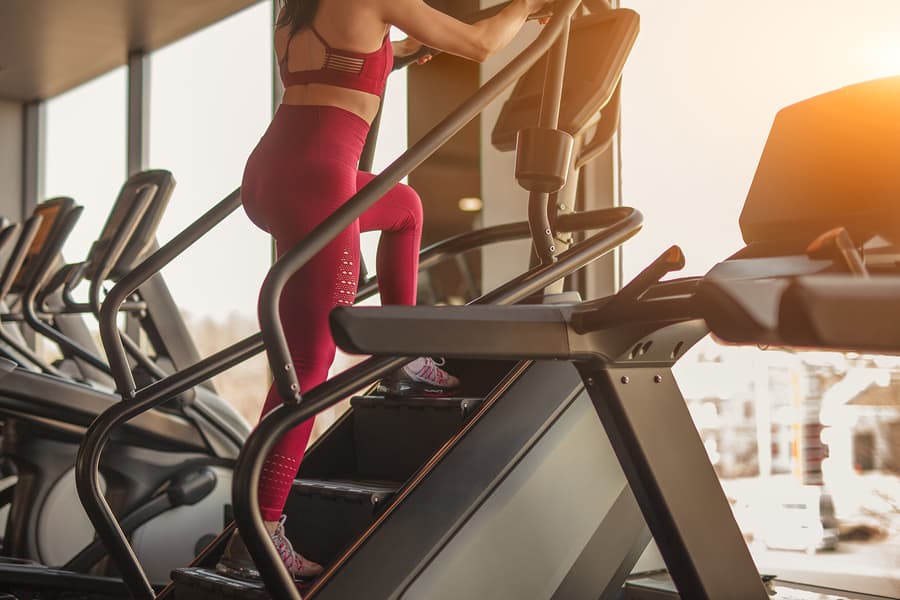
3. Stairmaster
Want to get your heart rate up in a hurry? Stairclimbers are the way to go.
This piece of equipment packs a punch when it comes to low impact cardio exercise.
You’ll typically see two kinds: a more massive machine that looks like a rolling staircase, and a smaller one people might refer to as a “stepper.” Both are fine. It just depends on what you like.
Injury prevention tips
No matter what kind you’re using, avoid leaning over the handrails like you’re hanging on for dear life.
I know this may make it seem like you can go faster, take more resistance, or whatever, but the truth is, it’s not doing you any favors.
You’ll get a better workout if you stand up straight and engage your muscles properly.
Also, leave out the kicks that are so popular these days.
I know the fitness magazine promised you some magical glute workout, but the reality is you’re wasting your time.
If glute strength is your goal, there are better ways to do that (that actually work).
Read more about Stairmaster Workout Tips here.
4. Stationary bike
Nothing groundbreaking here, but stationary bikes can be a low impact friendly tool. They’re also a piece of cardio equipment that’s easy to have at home.
Varying the resistance can give your intensity a boost.
Injury prevention tip
Make sure to adjust the seat height appropriately and keep your knees and toes straight ahead while pedaling.
To make cardio machines less boring, try stringing together 10 minutes on several different types.
You can also try my method of using Aaptiv to follow a “class.” Pick your type of equipment, time, and difficulty level, and the trainer will guide you through a workout. You’ll get more out of it than just mindlessly pedaling away to whatever bad TV is on.
Read my full review of the Aaptiv fitness app here.
5. Indoor cycle class
Are you looking for a more exciting workout? Try a spin class.
Spinning takes the stationary bike game to a whole new level.
Unlike riding outside, you have total control over your “hills” by adjusting the resistance.
Injury prevention tip
Read the full article for all the details on how not to get hurt in cycle class.
6. Swimming
Swimming is a total body workout and is low impact on most of the body except the shoulders.
When I say impact, in this case, I mean stress and strain on the shoulder joint and surrounding tissues. Swimming requires a lot more demand on the upper body.
Injury prevention tip
Mix up your strokes and work in some kickboard work to give your shoulders a break and work different muscle groups.
Related Read: Keys to Maintain Healthy Shoulders
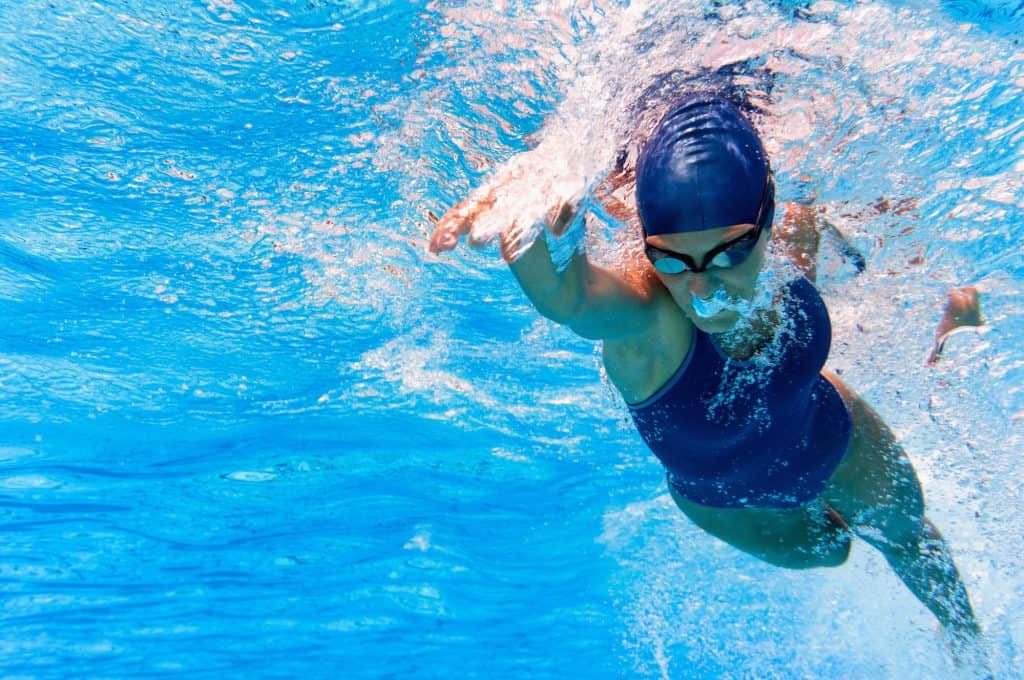
7. UBE (upper body ergometer)
Have you ever noticed a strange machine tucked away in the corner that looks like a bicycle for arms?
Well, it is! UBE stands for upper body ergometer.
If you’ve ever been to physical therapy for your shoulders, you know what this is. Guess what? It’s not just for rehab!
The UBE can be a great warm-up before workouts, especially before upper body strengthening. It can also be an excellent choice to get some cardio if you’ve got a lower-body injury.
Bonus – it’s usually vacant because no one knows why they should use it.
Injury prevention tip
The UBE is a repetitive motion that most of us aren’t used to. Six minutes on this machine can seem like a lifetime. Gradually work your way up in time and resistance to avoid repetitive elbow strain.
It’s also good to alternate between “pedaling” forward and backward. Every minute or two, try switching directions to work different muscles.
8. Step aerobics
Yes, step aerobics is still a thing, and it’s the ultimate bang for your low-impact buck.
Step aerobics is high on intensity and low on impact. Remove those mental images of fluorescent leotards and give this cult classic a try.
I won’t lie, step aerobics can be intimidating, and there is more of a learning curve, so temper your expectations. Once you catch on, you’re in for a calorie-torching session.
Seems like too much going on at once? You can always basic step your way through as you learn the moves. Step aerobics is highly choreographed to the beat of the music. If you can mark time, you can do step.
Don’t miss Step Aerobics For Beginners – A Complete Guide To Getting Started.
Injury prevention tip
Start with no risers.
The average step is 4” high. You can then add a set of 2” risers to increase the difficulty.
Due to the quick movements and directional changes in step aerobics, higher isn’t better and may increase your chances of injury.
4-6” steps are the optimal height for step aerobics – That looks like no risers or a step with one set of risers. Any higher and you’re an accident waiting to happen.
You can even do the class without any step at all!
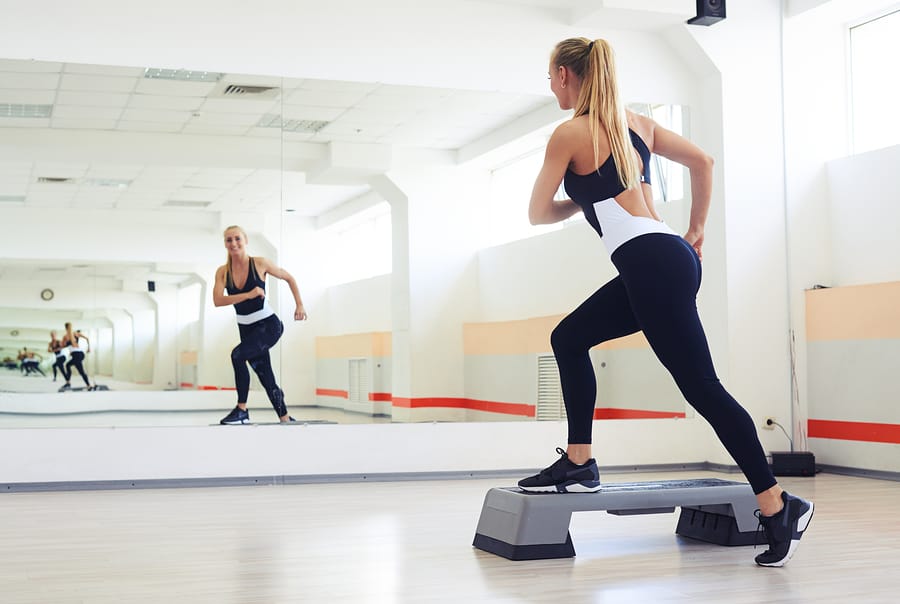
9. Pilates
In search of a low impact core workout that delivers?
Pilates focuses on core and postural muscle strengthening as well as flexibility. It’s designed to be practiced slowly and with control. 7-10 reps are surprisingly fatiguing when done correctly.
This functional integration of core and postural muscles improves strength, posture, mind-body connection, and flexibility.
Pilates can be mat-based or apparatus-based such as in a studio with reformers.
Mat Pilates has a lot to offer and can be easily done at home.
Injury prevention tip
If kneeling or other positions causes discomfort, invest in a good quality padded mat. The extra padding will help protect your joints and make movements more comfortable.
One of my favorite mats for both yoga and Pilates is the Jade Harmony mat.
This mat is lightweight to carry around, but has amazing padding and grip, without compromising your ability to feel the floor.

10. Yoga
A regular yoga practice can help develop flexibility, strength, balance, and calming a busy mind.
There are many different styles of yoga ranging in difficulty, so there’s something for everyone. If you’re new to yoga, look for beginner level classes and familiarize yourself with the basic poses.
Injury prevention tips
Props such as blocks, straps, blankets, and bolsters can further support the body to deepen poses and prevent injuries.
Blocks are ideal for bringing the floor up to you.
Straps can assist with stretching by extending your limbs without compromising form.
Blankets can pad and cushion, for example, knees during kneeling positions.
Bolsters are useful to support various positions, particularly in slower-paced classes.
If kneeling bothers your knees, get your hands on these Gaiam knee pads. The gel-like material offers a fantastic cushion, and you can even use them under your elbows or hands!
For more tips on how to protect sensitive knees during yoga, check out this article.
Read Yoga Blocks for Injury Prevention for more insight into how this versatile prop can help you!
11. Low impact cardio kickboxing
Technically, you can make any fitness class a low impact option with a few minor modifications.
To make cardio kickboxing low impact, limit jumping, and consider substituting high knees or toe taps for kicks.
Injury prevention tips
Even at low intensities, there’s still a lot of pivoting and twisting that goes along with cardio kickboxing.
Wear appropriate cross-training shoes, and don’t keep your feet planted to avoid placing extra stress on the knees.
Another no-no is punching while holding weights.
Long story short, I’ve been in more than one cardio kick class where the instructor had this fabulous idea for everyone to grab 3-5# dumbbells.
If your goal is to develop shoulder and elbow tendonitis, then this is the way to go. Punching with dumbbells is inappropriate for the general population.
My physical therapist brain was exploding watching all these poor people put themselves at serious risk for injury – and thinking they were doing something good for themselves!
Guess what? At the next class, many were complaining of shoulder pain.
1# weighted gloves may be an option only for those who have good form already. When you start to get fatigued, it’s a good idea to take them off to avoid injuries as form deteriorates.
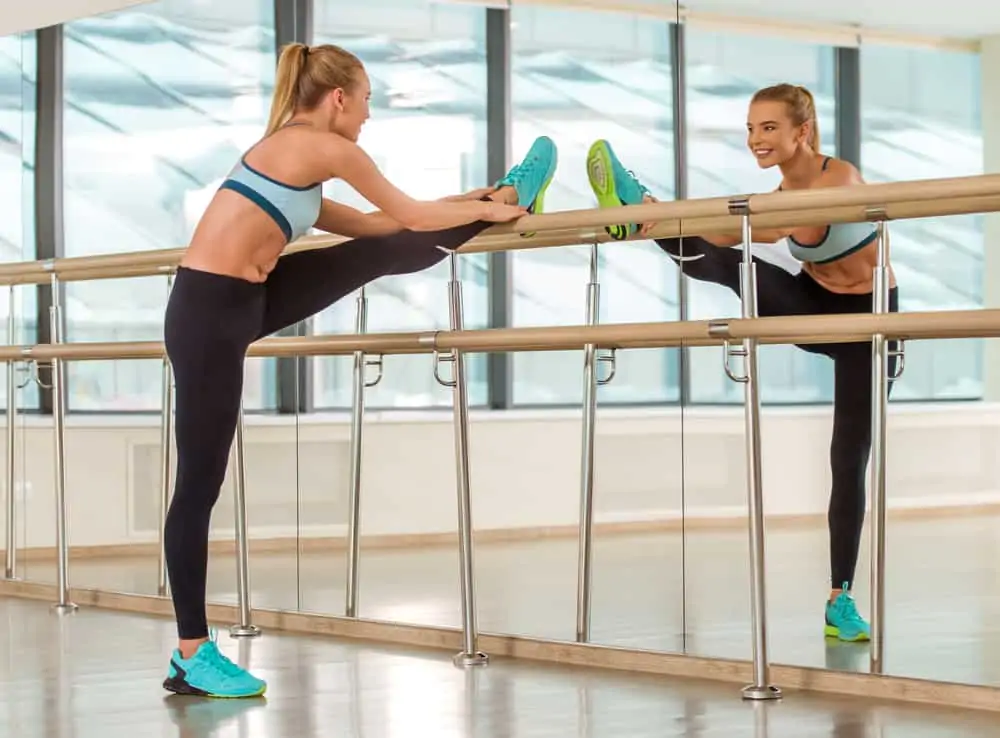
12. Barre fitness
Barre fitness is a loose term for classes inspired by ballet.
Not all barre classes produce the same results, and I’m a fan of Bar Method, as it’s created with physical therapists, and it’s the only barre class I’ve seen noticeable results from. There’s also a surprising amount of core strength built into the workout.
For anyone laughing at barre fitness, I challenge you to a class. (You’ll probably want an Epsom salt bath the next day, just sayin’.)
Injury prevention tip
Keep your weights light.
Barre classes often feature high reps with low weight for upper extremity strengthening. Depending on your level, starting with 1-3# is appropriate until you learn how you respond to the exercises.
1-3# doesn’t sound like a lot, but when you need to maintain a position for 60+ seconds, 3# starts to feel like 50#.
13. Dance fitness
Many people enjoy dancing and flock to Zumba and other dance fitness classes because it’s fun and doesn’t feel like a workout.
Dance fitness makes the list of low impact workout options and can be moderate to high on the intensity scale, depending on what you put into it.
Injury prevention tip
Wear the right shoes!
Wearing running shoes to a dance fitness class is a major no-no and increases your risk for a knee injury.
If dance fitness is part of your routine, invest in some dance fitness shoes.
14. Low impact strength training
Don’t shy away from strengthening just because you’re looking for low impact.
Strength training is an essential piece of a well-rounded fitness program not only for muscles but bone health too. Maintaining muscle mass is important with age and helps to improve bone density.
To stay low impact, you can decrease the resistance and increase the repetitions.
Don’t underestimate the power of bodyweight exercises.
Light weights, resistance bands, and TRX suspension trainers can offer other low impact resistance alternatives.
TRX can also help with squat form by assisting with upper body counterbalance and taking pressure off the knees.
Injury prevention tip
Form is always the most important to avoid injury with strengthening exercises. Even light weights can cause a problem if you’re not performing movements properly.

15. Tai Chi
Tai Chi focuses on slow and controlled movements to improve energy flow and integrate the mind and body.
While this won’t contribute to cardio or calorie burning, Tai Chi can improve strength, balance, and proprioceptive awareness. It has been proven an effective method of fall prevention in older adults.
Injury prevention tip
Don’t lock your knees.
Keep a slight bend at all times to work muscles more effectively and aids in returning blood to the heart.
16. Water aerobics
Water aerobics is a mixed bag and tends to get a bad rep that it’s only for the retired crowd. I won’t lie, that’s mostly who attends, but it also depends on the venue.
Water aerobics involves doing exercises in the pool and using the buoyancy and resistance of the water for aerobic and strengthening activities.
Chest deep water will reduce the force of your body weight by 70%.
Even water walking in waist-deep water can be a low impact activity when recovering from a lower-body injury.
Injury prevention tip
Water still does provide resistance, and it’s still possible to overdo it, especially when we start talking about tools like foam weights and other apparatus to increase difficulty.
Read Beat the Heat with Aquatic Exercise for more tips!
17. Rowing machine
Rowing machines are making a comeback. This sneaky piece of equipment helps you work your entire body at once.
And guess what? It’s one of the most misused pieces of cardio equipment at the gym.
Injury prevention tip
A lot of people get rowing wrong.
I remember watching a woman in a small group training session row with terrible asking-for-an-injury form, week after week.
All I could think of was, “how can this trainer, that she’s paying for by the way, never correct her!”
I digress, that’s a problem for another day.
But that’s not going to be you, because you’re going to watch this great video demonstrating how to use a rowing machine properly!
18. Interval training
Lately, it seems like the name of the game is high-intensity everything like as if you’re not cool if you don’t bring yourself within a few seconds of passing out.
Not everyone wants to (or should) work out like that.
But interval training alone doesn’t mean high impact.
Interval training means varying your speed, weights, or difficulty to boost your workout.
Injury prevention tip
Always listen to your body and work at your level.
Read Tabata vs. HIIT vs. Interval Training – What’s the Difference?
Low impact workout at-home resources
Here are some great resources to get started with low impact workouts today!
Fitness app & streaming options
YogaDownload – Bring the studio to you with plenty of beginner yoga options and access to beginner pose guides to get confident with your form.
Aaptiv – Aaptiv is my go-to for making cardio machines less monotonous. Follow an audio “class” for elliptical, treadmill, or stationary bike.
There are also options for strength training, stretching, yoga, and Pilates. All levels welcome.
Read my full review of Aaptiv here.
YouTube low impact workout options
Denise Austin – I still have some of her DVDs lying around somewhere, but now she has a YouTube channel with Hi/Lo Cardio options, Pilates, and strengthening workouts.
Lottie Murphy – One of Pilates’s critical things is that it needs to be done slowly, precisely, and with control. Lottie Murphy does a great job of encouraging this through her at-home Pilates workout videos.
Heather Robertson – Her YouTube channel has a full library of workouts for every level, including a sizeable low impact selection. Her workouts are great if you don’t like a lot of chit-chat.
As with all videos, be prepared to BYO modifications.
Want to see more of my favorites? Head over to the resources page.
Key takeaways
Getting the recommended amount of physical activity is a major key to unlocking health benefits.
You don’t need a high-impact workout to make a good exercise session. You can make any workout low impact with a few small tweaks.
For more tips on how to modify any movement to your level, read this article on Exercise Modifications.
Incorporating a variety of different types of activities can help increase overall health benefits as well as decrease risk for injury. Aim to include elements of cardiovascular fitness, strength training, flexibility/mobility, and balance in your fitness routine.
It’s possible to design a full fitness program around low impact activities or cross-train with them a few times per week.
Low impact activities can also make it easier to stick to a fitness program.
Ultimately the best activities for you will be the ones you enjoy that you can consistently perform.
featured image credit: CreativePhotoTeam.com / bigstockphoto.com
References
Frye, Brian & Scheinthal, Stephen & Kemarskaya, Tatyana & Pruchno, Rachel. (2007). Tai Chi and Low Impact Exercise: Effects on the Physical Functioning and Psychological Well-Being of Older People. Journal of Applied Gerontology – J APPL GERONTOL. 26. 433-453. 10.1177/0733464807306915.
Mohamed, Said & Lamya, Ncir & Olfa, Nejlaoui & Hamda, Mansour. (2015). Effects of high-impact aerobics vs. mixed low-impact aerobics and strength training program on body composition, physical fitness and CVD risk factors in overweight and obese grade I women. The Journal of sports medicine and physical fitness. 57. 10.23736/S0022-4707.16.05857-X.

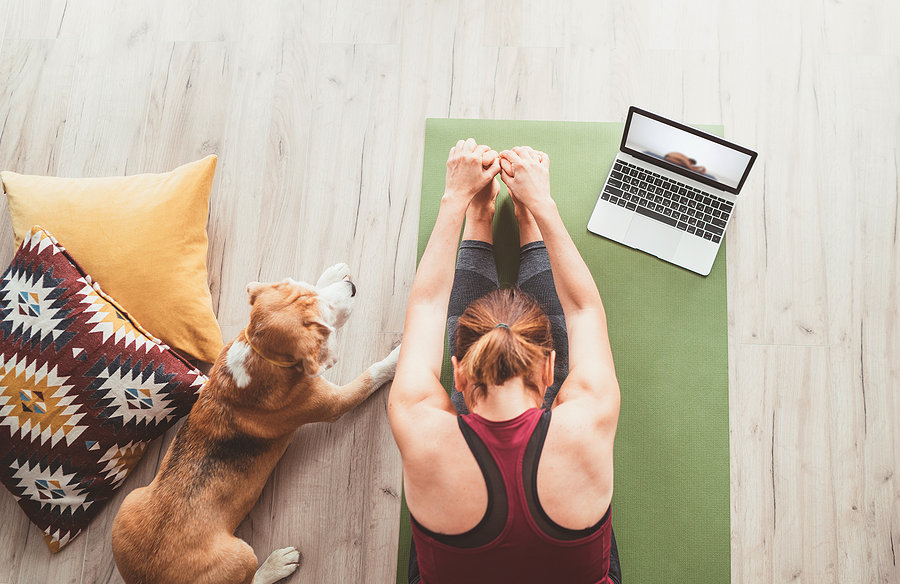
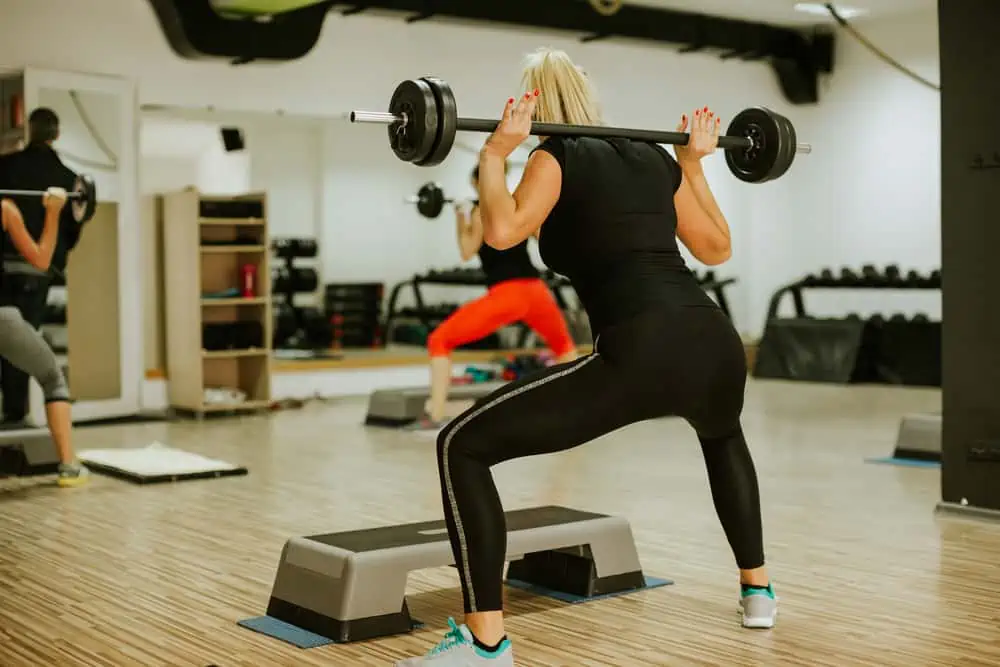
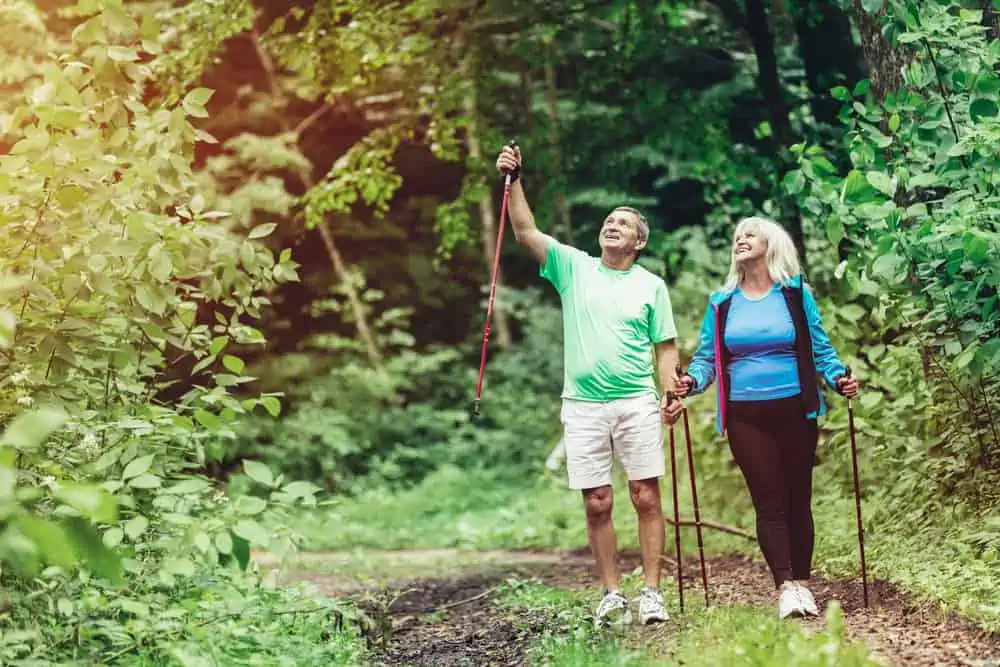
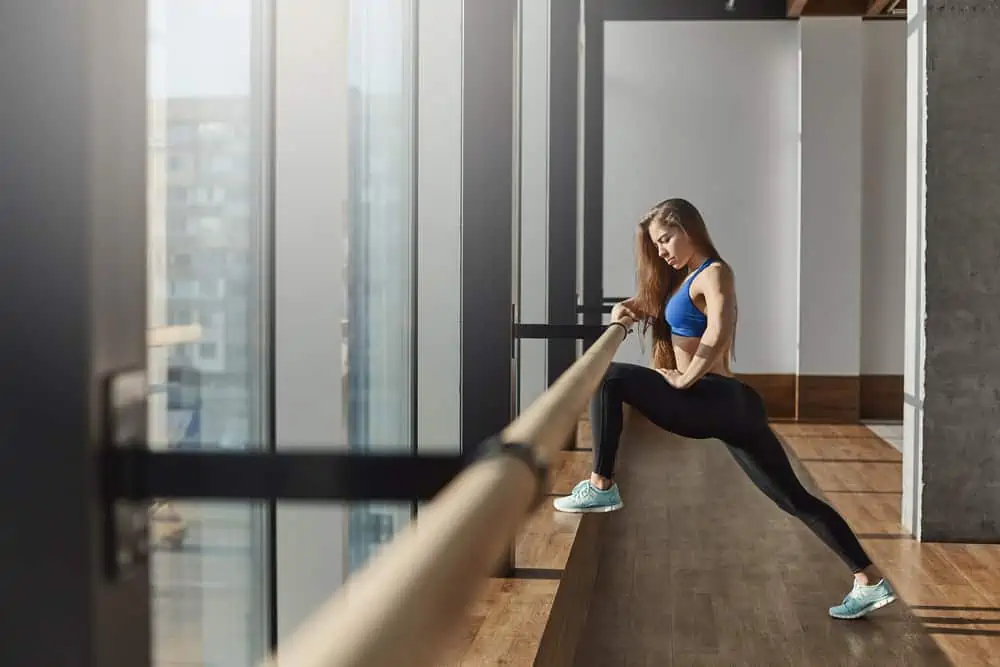
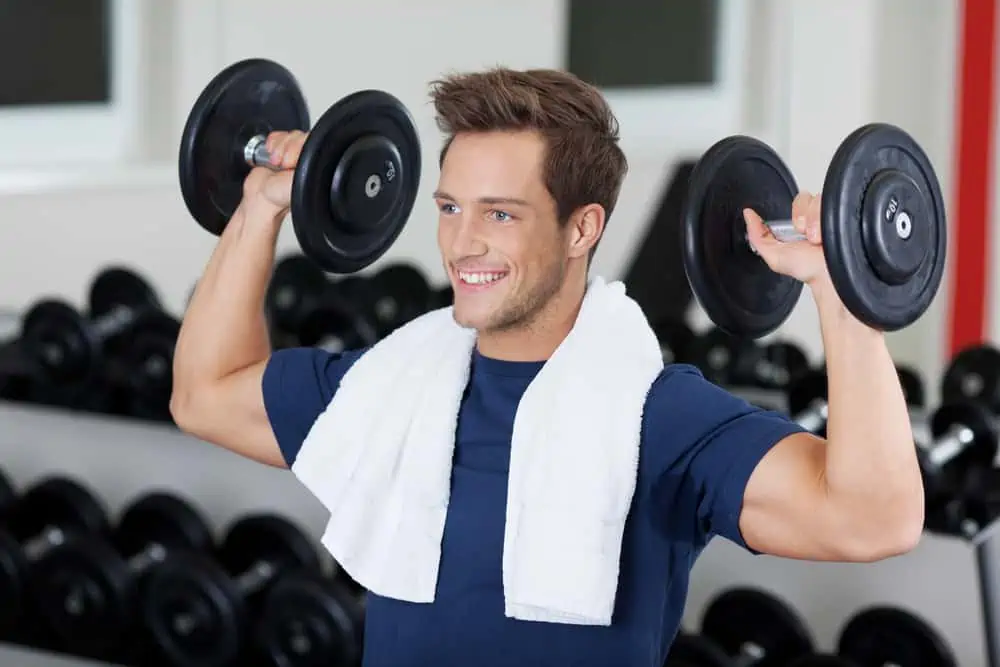
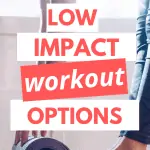
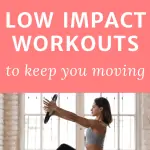
I love how different exercises have different benefits and provide relaxation. I’m definitely trying Tai Chi!
You’ll have to let us know how it goes! Thanks for reading.
This is AWESOME! All of my favorite fitness activities are on here (yoga, walking, and Barre), so I’m definitely a low impact woman! This inspires me to incorporate some of the other options on your list too. Thank you for sharing! ??
Thanks! Yes, you can create a balanced fitness program through low impact exercises.
I love how thorough your posts are. Injury prevention is something crucial to think about, even when it comes to low-impact workouts. Thanks for sharing this valuable information! I’m off to yoga!
Thank you! Enjoy yoga.
I love doing 90% of this stuff. I think I just need to add a schedule on my cal so that I actually do them. 😉
I am a huge fan of low impact exercises. I have some joint pain so can only really do higher impact once every couple weeks, but lower impact, more often, that’s the sweet burn for me!
Absolutely, you can get a great workout with low impact.
This was very informative! I love the way you provided the benefits, risks, and proper usage.
Thank you!
It’s such an important concept that low impact exercise does not equal low intensity! I have a number of chronic injuries, and too often I feel frustrated when I can’t do my first choice of a workout. However, it’s really helpful to see such a comprehensive list of the workouts I *can* do. There are so many to choose from!
Absolutely, high impact or high intensity can be intimidating and deterring to many people, causing them to avoid fitness altogether.
Sometimes I need low impact exercises when I injure something
I really enjoyed this article, you provided a ton of great options and tips for a variety of different exercises, thank you so much! I have a regular yoga practice and strength train but am always looking for new things to add in so this is super helpful.
Thanks for reading! Glad it was helpful.
I love yoga. Even though I like high intensity workouts from time to time, I find that I get bored of them quite quickly. I also love that you can do yoga literally everywhere.
Yes, they definitely have a place, and great to have activities you can do all the time no matter what.